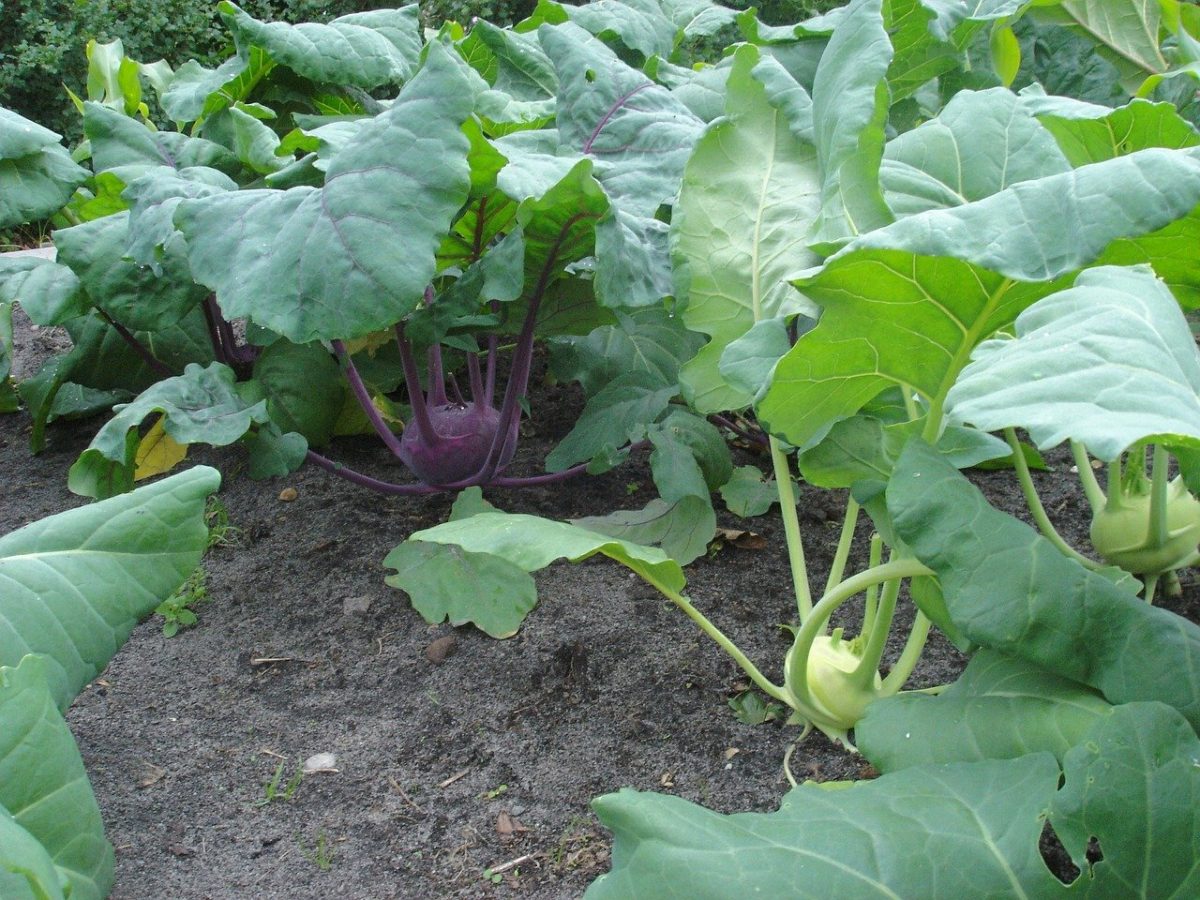Kohlrabi, information about crop management
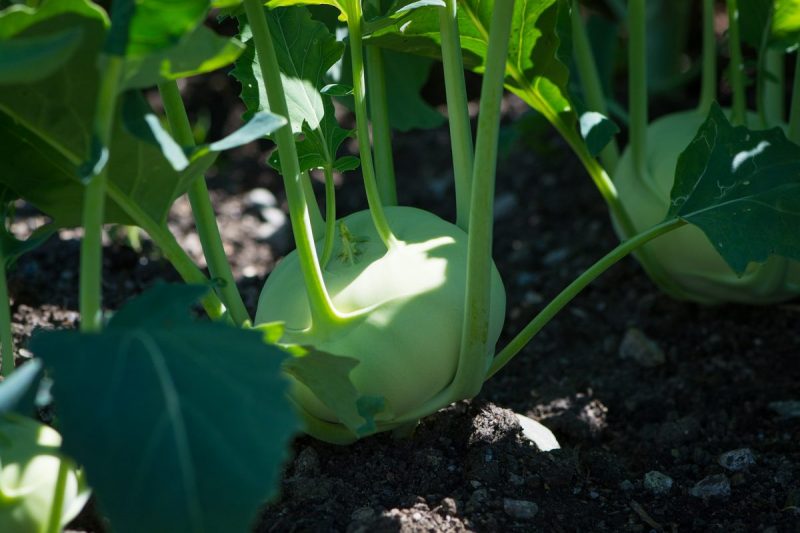
Kohlrabi (Brassica oleracea var. Gongyolides) is a biennial vegetable of the Brassicaceae family, genus Brassica, cultivated for its pleasant taste and dietary properties. It is a species native to the Mediterranean basin, widely cultivated in East Asia, especially in China and Japan.
Botanical particularities
Kohlrabi has a pivoting rooting, which does not penetrate deep into the soil. The stem is thickened, during growth, it acquires a globular shape, slightly flattened. The core of this spherical stem (also called the fruit stem) is edible.
The stem is white, greenish, or blue-purple. It has large, elongated leaves, irregular edges, toothed, and long petiole. Being a biennial species, it forms flower stalks (approx. 1 m high), flowers (yellow), and seeds in the second year of cultivation.
Climate and soil requirements
The kohlrabi has low demands on climatic conditions, withstanding both low and high temperatures as long as humidity conditions are optimal. For satisfactory results, it is recommended to maintain soil moisture at 75-80% of field capacity for water throughout the growing season. Dry soil leads to woody stem bases, and excess moisture can limit the growth process and cause stem cracking. Maximum growth is obtained in full light. As for the soil, kohlrabi prefers loamy soils, rich in humus and minerals, with neutral pH and medium texture.
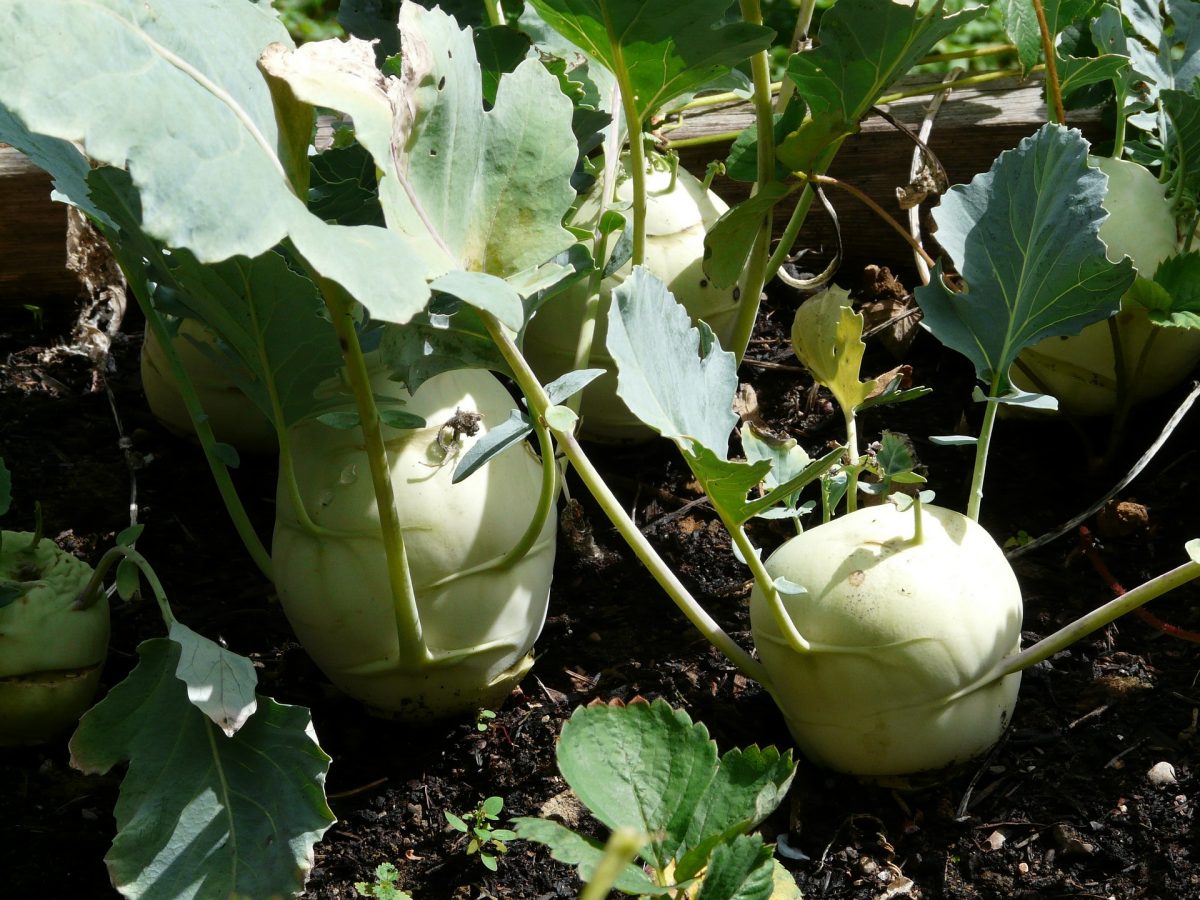
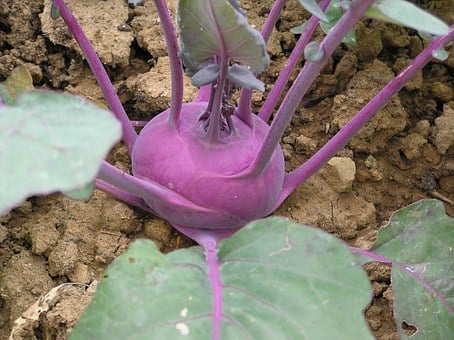
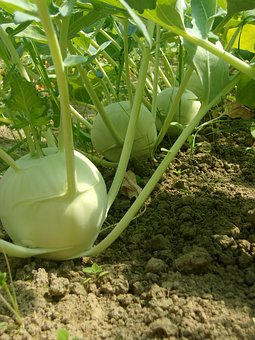
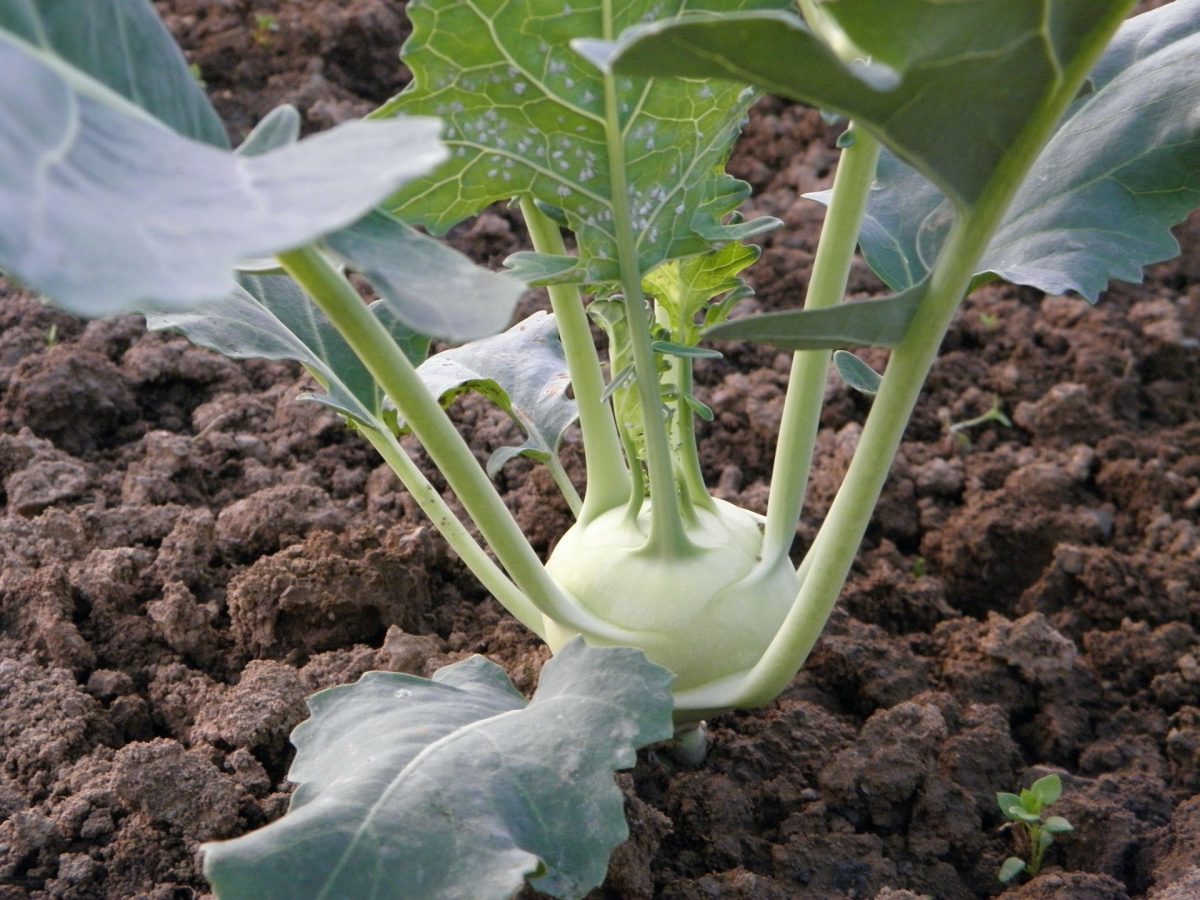
Cultivation
Kohlrabies can be grown in greenhouses, polyhouses, low tunnels, and directly in the field. In the field, there are two different cultures: the early and the autumn (late). In all the above cases, the crop starts with seedlings. Kohlrabies can be grown in crops associated with other plants, such as tomatoes or cucumbers.
Soil preparation
In the case of early crops, rotations of 4-5 years are used (gully can be grown in the same place every 4-5 years). Recommended pre-seed species are cucumbers, pumpkins, melons, aubergines, peas, and beans. In the autumn before cultivation, collect plant debris, apply phytosanitary treatments, apply organic and chemical fertilizers, and carry out basic plowing (to a depth of 30 cm). In spring the soil must be tilled and leveled, and 10-14 days before planting, it must be fertilized with specific fertilizers. You can apply herbicides before planting.
Recommended products
-
You can find products on a different store
Change Store -
You can find products on a different store
Change Store -
You can find products on a different store
Change Store -
You can find products on a different store
Change Store -
You can find products on a different store
Change Store -
You can find products on a different store
Change Store -
You can find products on a different store
Change Store -
You can find products on a different store
Change Store -
You can find products on a different store
Change Store -
You can find products on a different store
Change Store -
You can find products on a different store
Change Store -
You can find products on a different store
Change Store -
You can find products on a different store
Change Store -
You can find products on a different store
Change Store -
You can find products on a different store
Change Store -
You can find products on a different store
Change Store -
You can find products on a different store
Change Store -
You can find products on a different store
Change Store -
You can find products on a different store
Change Store -
You can find products on a different store
Change Store -
You can find products on a different store
Change Store -
You can find products on a different store
Change Store -
You can find products on a different store
Change Store -
You can find products on a different store
Change Store
Specific liquid fertilizers can also be applied during the growing season.
Recommended products
-
You can find products on a different store
Change Store -
You can find products on a different store
Change Store -
You can find products on a different store
Change Store -
You can find products on a different store
Change Store -
You can find products on a different store
Change Store -
You can find products on a different store
Change Store -
You can find products on a different store
Change Store -
You can find products on a different store
Change Store -
You can find products on a different store
Change Store -
You can find products on a different store
Change Store -
You can find products on a different store
Change Store -
You can find products on a different store
Change Store -
You can find products on a different store
Change Store -
You can find products on a different store
Change Store -
You can find products on a different store
Change Store -
You can find products on a different store
Change Store -
You can find products on a different store
Change Store -
You can find products on a different store
Change Store -
You can find products on a different store
Change Store -
You can find products on a different store
Change Store -
You can find products on a different store
Change Store -
You can find products on a different store
Change Store -
You can find products on a different store
Change Store -
You can find products on a different store
Change Store
For autumn crops, use pre-planting species such as early potatoes, early tomatoes, peas, or beans. After their removal, carry out shallow plowing (to a depth of 20 cm) and fertilize. Before planting, apply specific herbicides, according to the label specifications.
Recommended products
-
You can find products on a different store
Change Store -
You can find products on a different store
Change Store -
You can find products on a different store
Change Store -
You can find products on a different store
Change Store -
You can find products on a different store
Change Store -
You can find products on a different store
Change Store -
You can find products on a different store
Change Store -
You can find products on a different store
Change Store -
You can find products on a different store
Change Store -
You can find products on a different store
Change Store -
You can find products on a different store
Change Store -
You can find products on a different store
Change Store -
You can find products on a different store
Change Store -
You can find products on a different store
Change Store -
You can find products on a different store
Change Store -
You can find products on a different store
Change Store -
You can find products on a different store
Change Store -
You can find products on a different store
Change Store -
You can find products on a different store
Change Store -
You can find products on a different store
Change Store -
You can find products on a different store
Change Store -
You can find products on a different store
Change Store -
You can find products on a different store
Change Store -
You can find products on a different store
Change Store
Sowing, pricking out, and planting
- For early crops, the seeds are sown to produce seedlings in early February. Seedling pricking is carried out in 555 cm nests. The optimum time for planting the seedlings is the end of March, or the beginning of April, and the planting distances are 25*25 cm (between rows and between plants).
- For autumn crops, the seedlings are grown on cold furrows. Seedlings can be planted from the beginning of June until mid-July, with distances of 60*30 cm between plants.
- For protected crops in low tunnels, sowing takes place in mid-January, with pricking out in 5*5*5 cm nests. Planting can be done in mid-March, with distances of 25*25 cm between plants.
- In greenhouses, you can cultivate kohlrabi in winter-spring. Sowing for seedling production can be done in several periods, preferably at the beginning of October or November. Planting can be done with 25*25 spacing between the plants.
Care works
It is recommended to fill in the gaps (if necessary), to carry out hoeings (whenever necessary), to water the crops according to the humidity conditions, to apply fertilizers, and phytosanitary treatments (in case of pests or diseases).
Harvesting
Kohlrabies should be harvested when the stem fruits have the characteristic size of the cultivar. The kohlrabies are dislodged with specialized aggregates, after which they are assembled manually, and then pulled out manually. In autumn crops, the yield is 30-40 t / ha.
In addition:
- kohlrabi can be eaten fresh or cooked in various dishes;
- it is recommended to be used or consumed as soon as possible after harvesting;
- seeds for germination can be stored for 4 years.















































































































































































































































































































































































































































